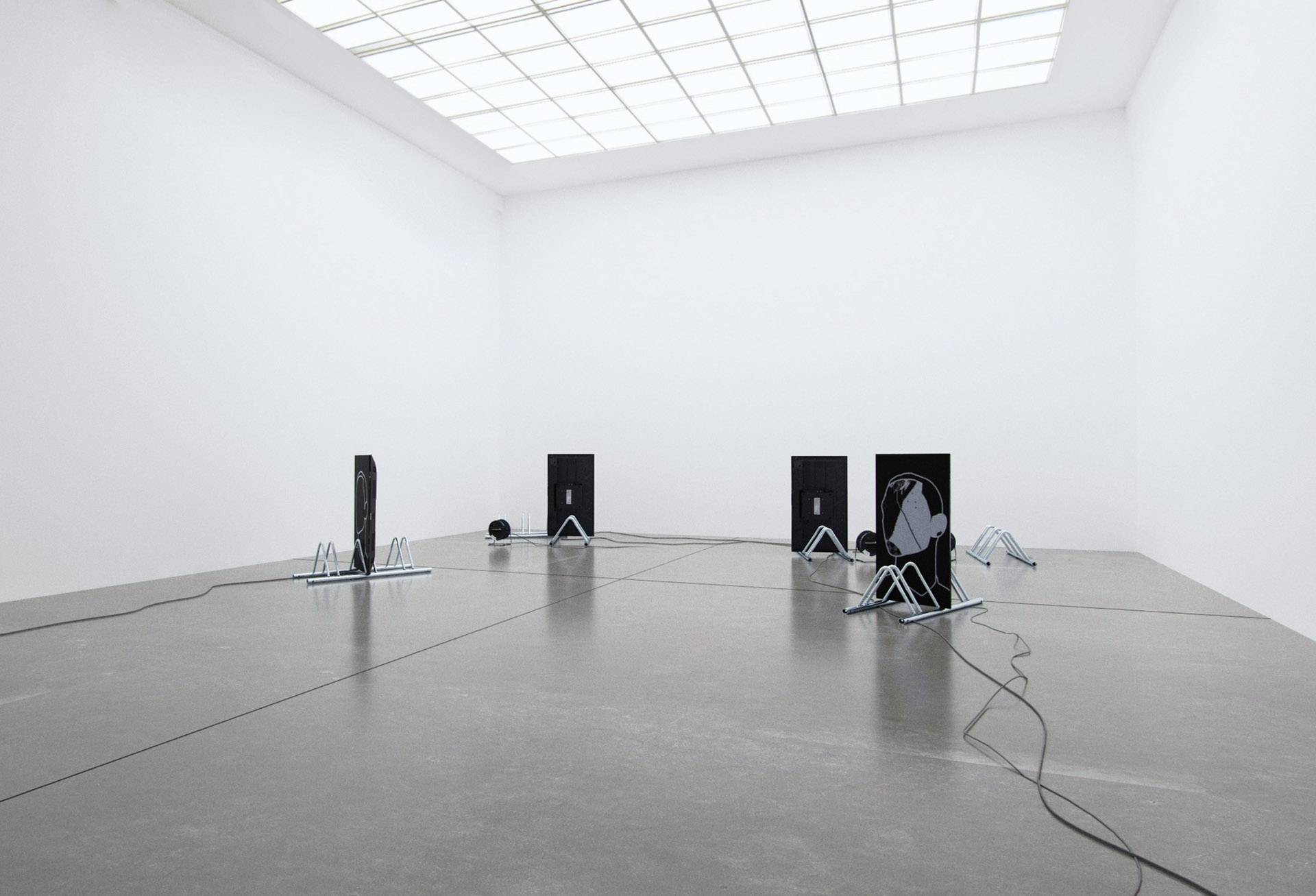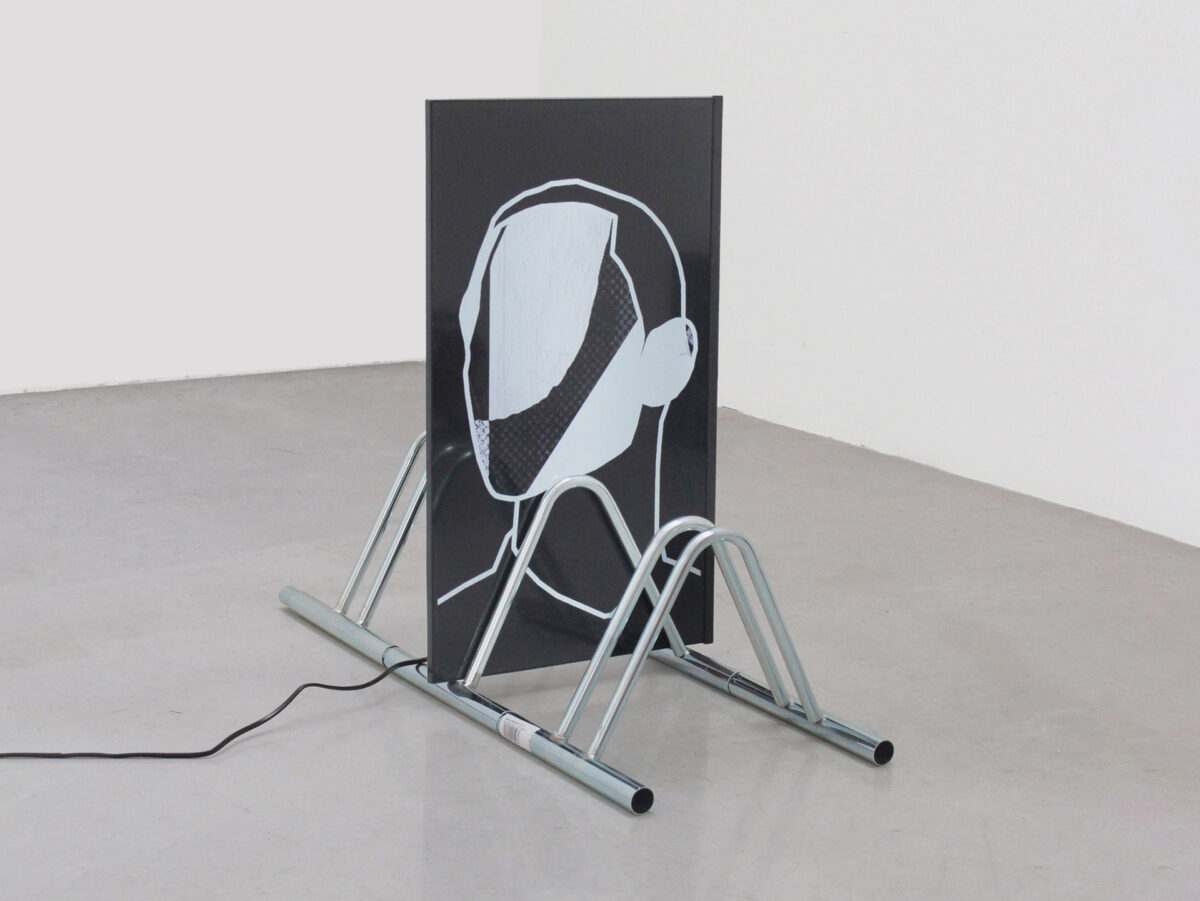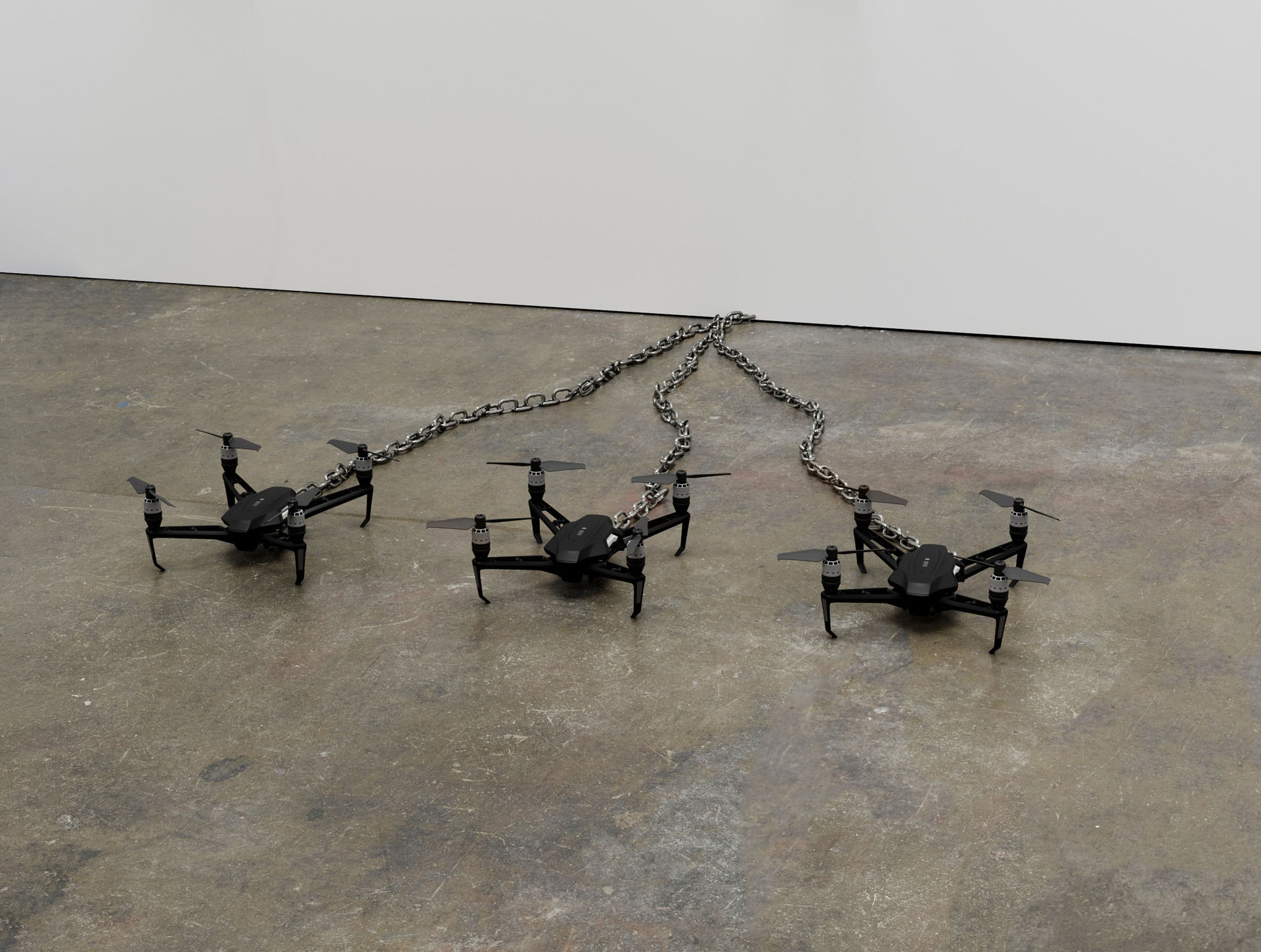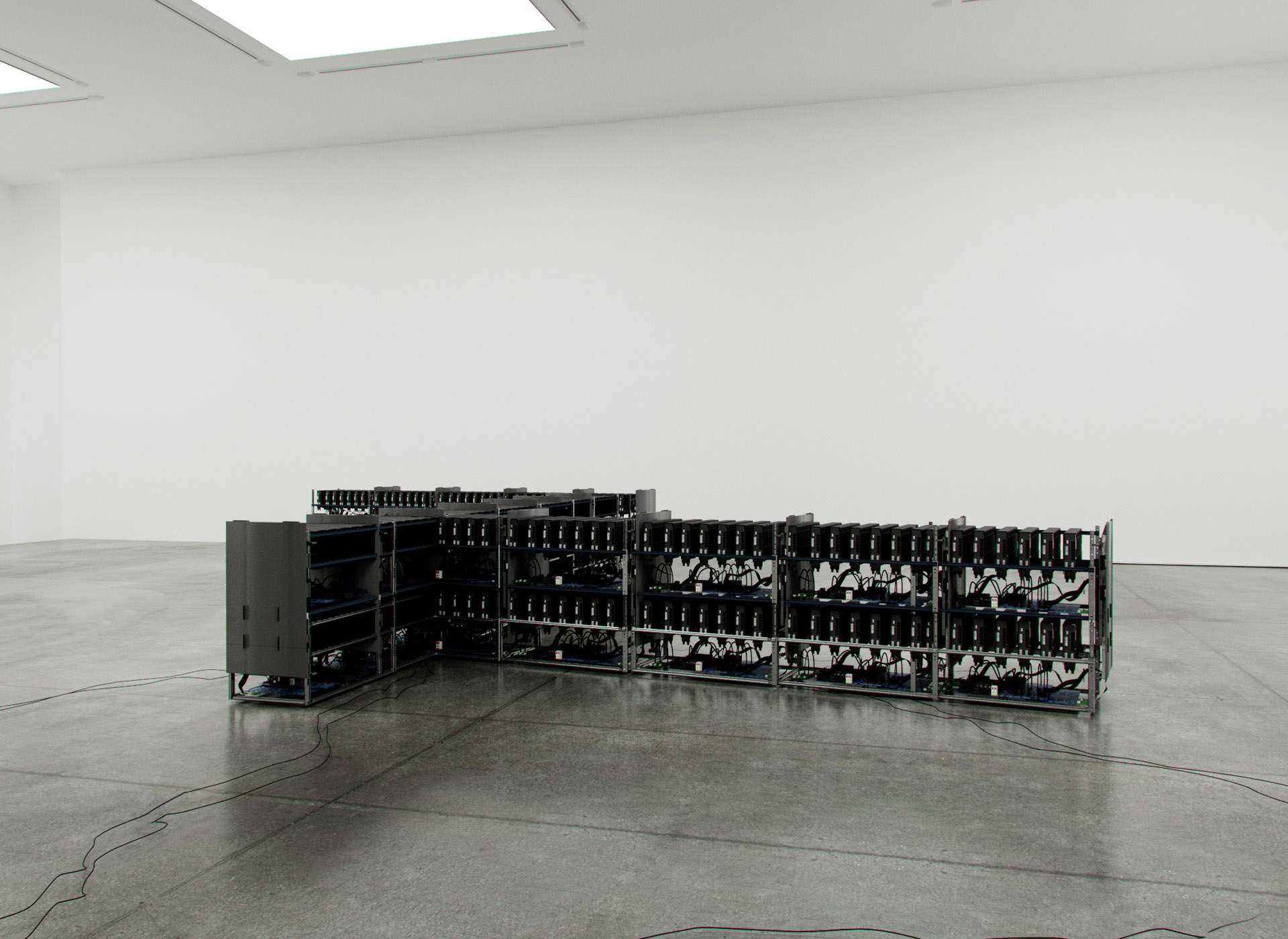In Conversation with Skygolpe
On the occasion of the exhibition PCE: Post Concrete Era, currently on display at Nighttimestory, Art Viewer talks to artist Skygolpe about his latest exhibition, the processes, and the stories behind his work.
Skygolpe is one of the most relevant artists in the digital art space working with NTFs. His work has been exhibited in many international galleries and institutions, such as Palazzo Giustinian (Venice, IT), Villa Panza (Varese, IT), Christie’s NY, Art Basel Miami, Museo della Permanente (Milan, IT), Valuart (Lugano, CH), Galerie Widmer (Zurich, CH), Nighttimestory (USA).
His iconic, faceless portraits result from a unique process converging physical layers with digital components. His work is born out of the encounter with the digital world, incorporating the virtual and the material in a continuous and inseparable solution.
Through his work, Skygolpe offers in-depth commentary on the impact of technology on society and the human experience, opening up new ways of interpreting, using, and thinking about art through blockchain technology.


Art Viewer: When and how did you start working with digital works and NFTs? What is your background?
Skygolpe: At 18 years old, I moved to East London, the epicenter of post-Banksy street art. I started experimenting there with artists like Stik, consistently working on the street. I was experimenting with different techniques and was drawn to the use of found objects to create my works. I was always fascinated by the idea of giving new life to discarded materials and telling a story through them.
After 6 years, I returned to Italy and focused on studio work – primarily installations, painting, photography, and visual and digital art. I was already working in digital before the advent of NFTs, but with a completely different approach.
I believe that the union between physical and digital reality is a relevant and even mandatory focus for artists today, something that even those with a more traditional approach are obliged to confront. NFTs have allowed me to respond well to this type of balance.

Art Viewer: Your latest show, PCE: Post Concrete Era, explores the boundary between virtual and physical experiences. Can you tell us more about this theme in your work?
Skygolpe: I’m definitely interested in how technology influences our perceptions of reality and blurs the lines between the virtual and physical. In this show, I want to invite the viewer to question those boundaries and consider the impact of the digital aspects of their own lives. What interests me is to present technology’s outward appearance – specific aesthetics in this exhibition describe a kind of technological brutalism.
External factors heavily influence human behavior, shaping and reshaping the mind. Working on this exhibition, I thought about how the interaction with virtual reality environments could lead to fundamental changes at psychological – and even biological levels – in the future.
Art Viewer: You mention that the show focuses on the surface of technology and its appearance. Can you elaborate on that aspect of the exhibit?
Skygolpe: I’m using ready-mades to create or produce a sort of technological brutalism, where the symbols of technology are constantly in a state of becoming. I want to emphasize the aesthetics of technology and how it shapes our experiences. Technology, in fact, consists not only of an inner part (how it functions), but also of an outer aesthetic that defines its use and perception.
I considered the study of the design of technological products and the function-form relationship related to all this. For example, some products are designed to create an experience that starts outwardly with the mere sight of the object and then arrives at its use.
My exhibition attempts to pose fundamental questions: how does the aesthetics of technology collaborate in constructing the experience of a given technological object? Is it possible to interrupt the standard logic of form and function to open up new paths and possibilities for the artistic use of the technological object? How much of our everyday experience is shaped and constructed from a virtual model of a general concept of “event”? With each new set of questions and answers, further questions open up.
Art Viewer: In your exhibition PCS: Post Concrete Semiotics, we see three parts or “zones.” One is the drones, another is the virtual reality goggles, and the last is what looks like a data center. All these elements refer us to surveillance and even military technology. Can you talk about this?
Skygolpe: The use of global surveillance and the importance of data for that function is an ongoing debate, with some arguing that surveillance is necessary for national security. In contrast, others consider it a violation of privacy and a threat to civil liberties. The exhibition invites the viewer to consider these controversial perspectives and to engage with more significant issues at stake.
The exhibition’s three parts or “zones” – drones, virtual reality goggles, and a data center – represent the construct of almost theatrical situations without necessarily unbalancing or bending in defining an unambiguous or pre-established narrative.

Art Viewer: These works also explore the psychological effects of technology. In this show, you touch on the idea that our minds are malleable and can be shaped by external factors, including virtual experiences. Can you tell us more about that concept and how it plays out in your work?
Skygolpe: Modern psychology has shown us that a multitude of external factors, such as social and cultural norms, family, friends, media, and environment, can shape human behavior and beliefs. This understanding is based on research demonstrating how people’s experiences and interactions with their environment can alter their behaviors, perceptions, and thoughts. The malleability of the mind refers to the idea that the brain is constantly changing and adapting in response to experiences, forming new neural connections and reorganizing existing ones. This plasticity of the brain allows it to be shaped and influenced by the environment, making it a crucial factor in shaping behavior and mental processes. It is as if these works somehow wanted to “announce” or rather “suggest” this influence of technology.
I’m using mixed reality elements to create a sense of embodiment in the viewer, and I’m exploring the idea that our experiences in virtual reality can affect and even alter our perceptions of ourselves and our place in the world. In short, I want to invite the viewer to consider how technology influences their behavior and shapes their mind.
Blurred boundaries between virtual and physical experiences is more ubiquitous now. I want to invite the viewer to think critically about that and consider how technology shapes their perceptions of reality.

Art Viewer: There’s been much buzz recently about NFTs in the art world. How do you think NFTs are changing the relationship between art and technology?
Skygolpe: Beyond the market argument, what is happening with NFTs is indicative of an exciting revolution. NFTs allow artists to create unique, digital works of art that can be verified as authentic and owned by a specific individual. It’s opening up new possibilities for artists to sell their work and for collectors to own digital art in ways that weren’t possible before.
Everything in the art system has historically moved very slowly into the realm of technology, but with the more recent development of NFTs and blockchain for authorship and collecting art, the convergence of art and technology is substantially accelerated. If you think about social media, you can easily imagine the evolution – even with NFTs and their adoption in the future.
If you think back just 15 years, social media was received with a distant eye in the art world, yet it has slowly made its way into common use. Today, for example, it seems normal for galleries and museums to tell their story on social media to reach the public, where it wasn’t common even a decade ago. Exhibition photos often appear on Instagram first, then reach magazines and blogs, and subsequently, the visitor decides to visit the shows in person. This process, although slow, has and continues to bring about a radical change in the process of experiencing the art world. I am convinced this change will also come to the market with the introduction and development of technology such as NFTs (or similar in the future). It will revolutionize not only the market itself, but also the very conception of digital art production, which is currently undervalued and freely distributed. Just think about the impact on video art or all digital productions that could become relevant and representative of this ongoing historical moment.
Art Viewer: After the initial outcry, how do you think NFT is evolving within the contemporary art scene?
Skygolpe: There is currently a general “market cleaning,” likely resulting in only relevant projects remaining. Under these circumstances, there will be a different space with many opportunities for artists to explore and experiment.
The initial outcry surrounding NFTs was primarily due to the high prices some pieces were fetching and general unfamiliarity with this new technology. However, as more artists and galleries have begun to embrace NFTs, the conversation has shifted towards the potential to revolutionize the art market by offering new forms of ownership and authenticity for digital artworks. Additionally, the increasing interest from mainstream art collectors has further solidified NFTs as a legitimate and valuable aspect of the contemporary art scene.
Currently, major galleries and institutions worldwide have initialized projects involving digital art. Significant examples are Christie’s, The Museum of Modern Art (New York), Art Basel, Art Basel Miami, Sotheby’s, König Galerie, Pace Gallery, and many more.
Art Viewer: Do you know Left Gallery? It is a project of Paloma Rodriguez Carrington and Harm van den Dorpel that consisted of a virtual gallery that sold digital artworks. The project was active from 2015 until 2022. Left Gallery also helped Spike Art magazine to sell a digital collection of all its magazine covers through NTFs. Spike Art did this as an experiment to raise funds for the magazine. How do you see NFT technology as a way to finance the work of artists and art projects, as well as publishing projects, galleries, and even museums that are not supported by the traditional art world system? Are NFT technology and the crypto economy decentralized and can genuinely help free artists from the limitations and restrictions of the art system?
Skygople: NFT technology and the crypto economy have the potential to revolutionize the art world by providing a new, decentralized way for artists, galleries, museums, and publishing projects. With the ability to sell digital assets in a secure and verifiable manner, NFTs have opened up new opportunities for artists to monetize their work outside of the traditional art world system, which, economically speaking, requires speculation that too many intermediaries control.
It’s not just an economic conversation but a culturally revolutionary one as well. This not only provides greater financial support for artists and art projects but also grants them greater creative freedom and independence. The establishment of a genuinely impactful digital market would be a significant accomplishment. This is already taking place with platforms such as Superrare, Nifty Gateway, and Art Blocks, which have generated a total sales volume of 2 billion to date, with $600 million USD in August 2021 (cryptoart.io/data).
In the case of Left Gallery, the project demonstrated the potential of NFTs to support and sustain the work of digital artists, as well as to provide a new avenue for selling and buying digital art.
Overall, NFTs and the crypto economy have the potential to provide a more democratic and equitable system for the art world, changing traditional financing and support structures.
However, it is essential to note that NFTs and crypto are evolving technologies – their potential to transform the art world genuinely is in progress at this very moment.
